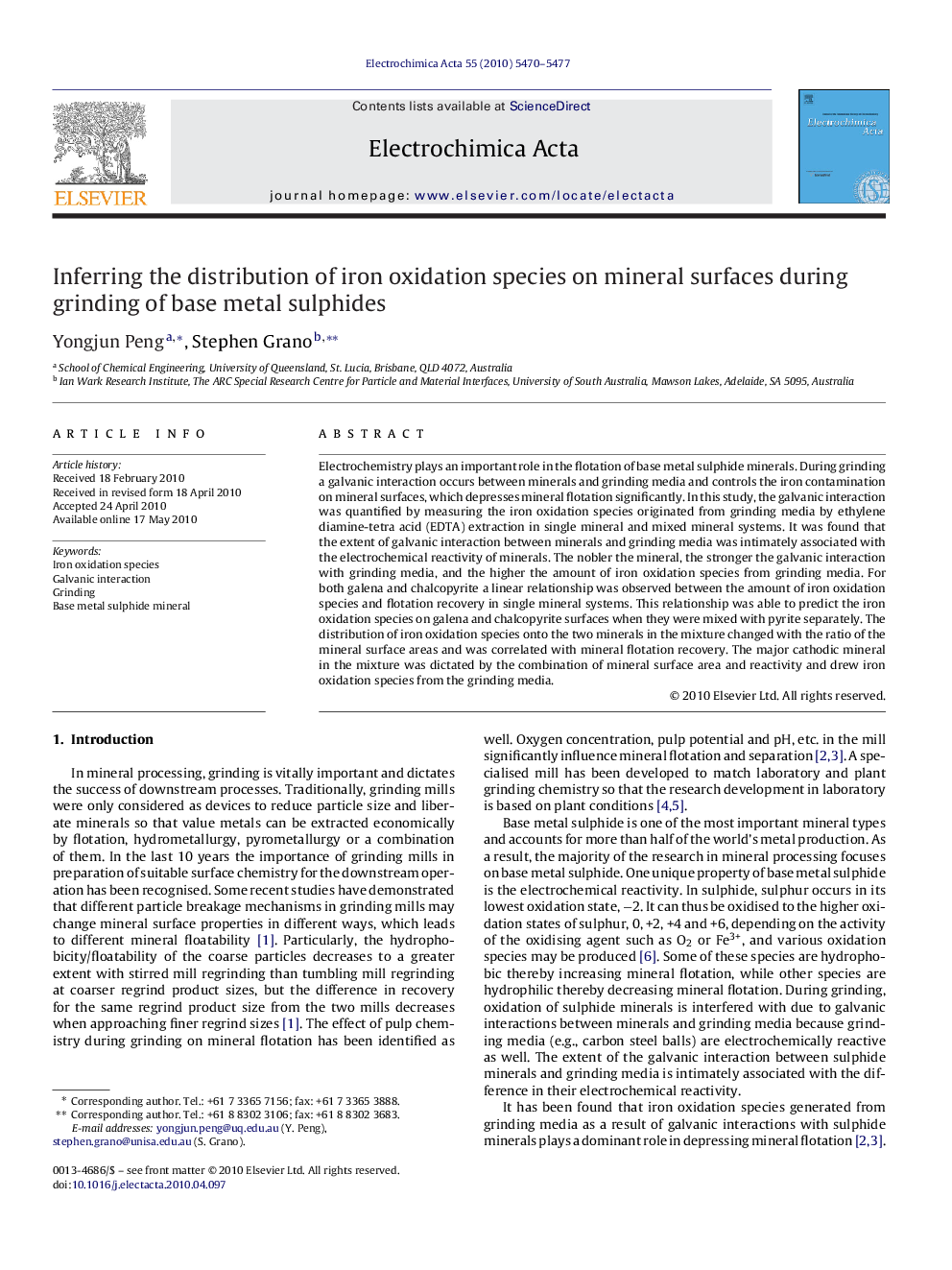| Article ID | Journal | Published Year | Pages | File Type |
|---|---|---|---|---|
| 191356 | Electrochimica Acta | 2010 | 8 Pages |
Electrochemistry plays an important role in the flotation of base metal sulphide minerals. During grinding a galvanic interaction occurs between minerals and grinding media and controls the iron contamination on mineral surfaces, which depresses mineral flotation significantly. In this study, the galvanic interaction was quantified by measuring the iron oxidation species originated from grinding media by ethylene diamine-tetra acid (EDTA) extraction in single mineral and mixed mineral systems. It was found that the extent of galvanic interaction between minerals and grinding media was intimately associated with the electrochemical reactivity of minerals. The nobler the mineral, the stronger the galvanic interaction with grinding media, and the higher the amount of iron oxidation species from grinding media. For both galena and chalcopyrite a linear relationship was observed between the amount of iron oxidation species and flotation recovery in single mineral systems. This relationship was able to predict the iron oxidation species on galena and chalcopyrite surfaces when they were mixed with pyrite separately. The distribution of iron oxidation species onto the two minerals in the mixture changed with the ratio of the mineral surface areas and was correlated with mineral flotation recovery. The major cathodic mineral in the mixture was dictated by the combination of mineral surface area and reactivity and drew iron oxidation species from the grinding media.
